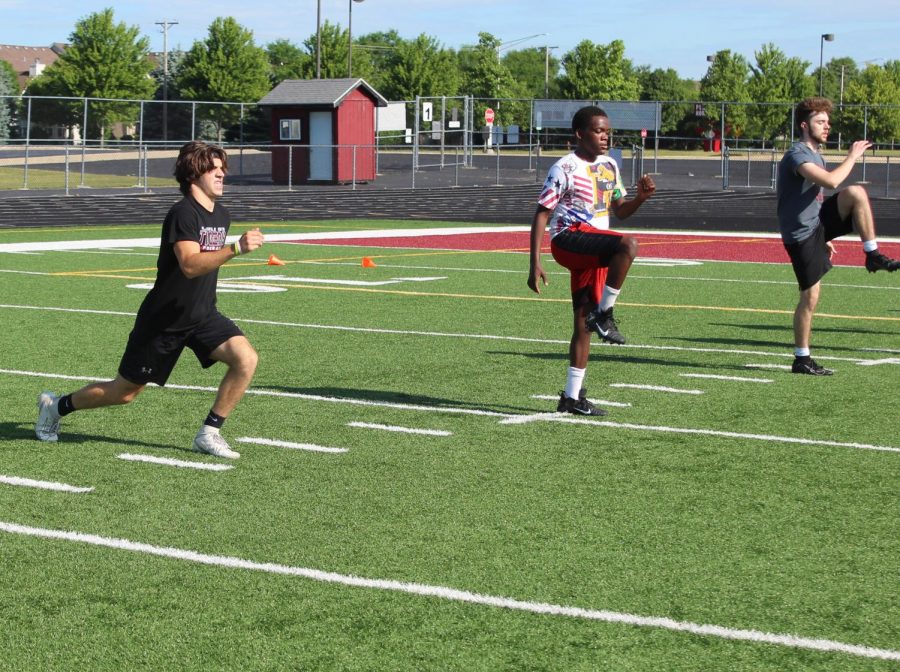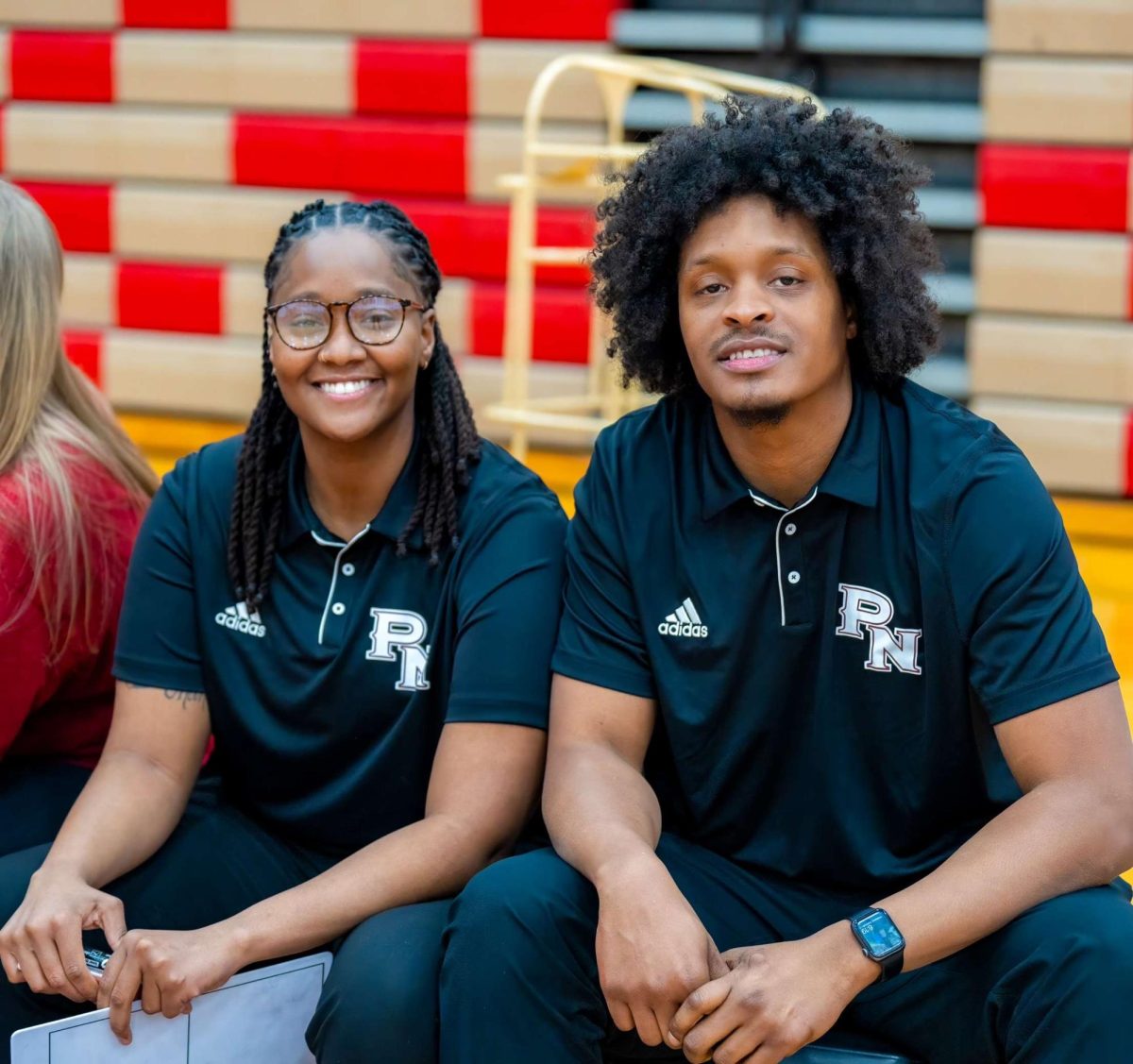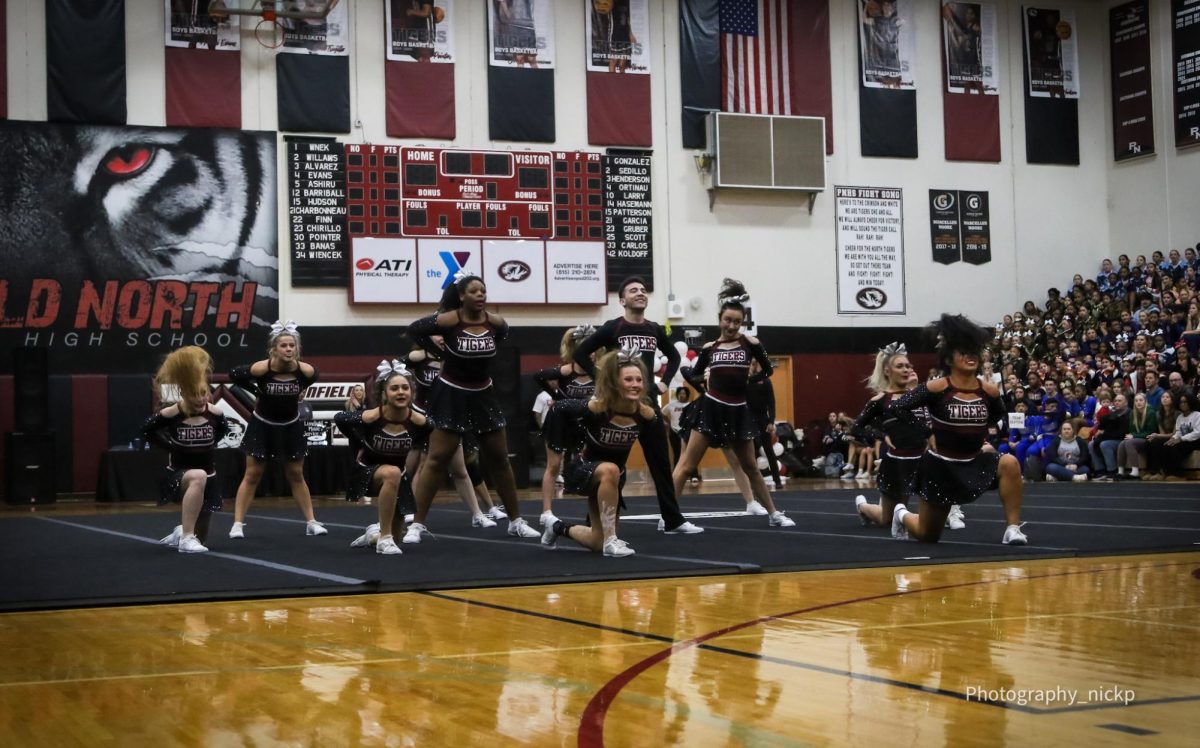Spring season is best option for football
Juniors Dylan Rasmason and Calvin Sharp, and senior Jack Kiefer took part in football drills this summer.
September 27, 2020
As the sun goes down, the competition heats up as the varsity football team takes the field. The bleachers are bouncing and filled with energy, and the music blares throughout the stadium. Fans of all ages come to soak in the excitement of football as the brisk, cool air makes for a perfect fall evening.
High school football games seemed to be a part of everyday life, but that all has quickly changed.
Fridays look a bit different right now with no football being played, but because of the uncertainty surrounding the coronavirus pandemic, it is not a wise decision to play high school football at the moment.
Originally, it started out on a school-by-school, district-by-district basis, but the Illinois High School Association made the executive decision on July 30 to move football season to the spring. The season is currently scheduled to return on Feb. 15, 2021.
The IHSA reasoned that because football is a high contact sport, it is too risky to have a season at this time.
“There’s no practical way to prevent outbreaks from happening in sports such as football with all the contact that’s inherent in the sport,” infectious disease expert Mike Lin of Rush University said in a press conference on Sep. 16. “There is a strong chance of spreading the virus considering that tackling is one of the main components of the game.”
Some college football teams are not even playing right now. The Ivy League schools completely canceled their season. Teams such as Yale and Harvard will not see the field this fall.
NCAA Division III outright cancelled their 2020 football season, whereas NAIA schools such as University of Saint Francis (IL) and Olivet Nazarene University moved their season to the spring.
If high school football were to be played right now, fans most likely would not be allowed to attend games because the current state mandate prohibits gatherings over 50 people. The Chicago Bears are not even allowing fans in attendance this season.
Understandably, some people are upset by the ruling. Students who are seniors would be missing their last high school football season, and parents would be missing their child’s games. A student-led protest was even held in Downtown Chicago on Sep. 19.
Football in the spring season would be more probable for fans to be able to attend high school games because there is a possibility for a vaccine to be available by the spring.
According to the New York Times’ “Coronavirus Vaccine Tracker” by Jonathan Corum, Sui-Lee Wee and Carl Zimmer, there are currently nine vaccines in “Phase Three”, which are vaccines going through large-scale efficacy tests. The article was last updated on September 17, 2020.
There are also three vaccines in the “Limited Phase”, which are approved for early or limited use. Zero vaccines have been approved for full use at this time.
Having a spring season would give more time for doctors and medical professionals to learn about the coronavirus and find some sort of vaccine or solution to positive tests. This would benefit the athletes because they would be certain that they are playing in the safest way possible.
High schools also do not have the funding or availability to have Covid-19 tests readily on hand.
Professional leagues such as the MLB, NBA, NFL, and NHL have made their seasons work because their athletes are constantly being tested to make sure that it is safe for them to play. According to NHL.com, over 900 daily Covid-19 tests were administered to players, coaches, and staff in the Edmonton “bubble.”
Even so, there have been some issues. The MLB has faced numerous coronavirus outbreaks among various teams. Plus, it does not just impact one player, it impacts the whole team.The latest outbreak happened on Aug.15 when a Cincinnati Reds player tested positive and caused two games to be postponed.
In previous years, recruitment would also take place in the fall for some players, but colleges are still finding ways to make it possible. Prospective schools are looking at highlights from both sophomore and junior year, and some schools are even making visits out to high school practices in order to watch them in person.
The bottom line is health and safety have to be the top priority. It is simply not responsible for high schools to be playing football right now with all of the unknowns surrounding the coronavirus pandemic, and it is not worth putting the athletes, coaches, staff, and fans at risk.







